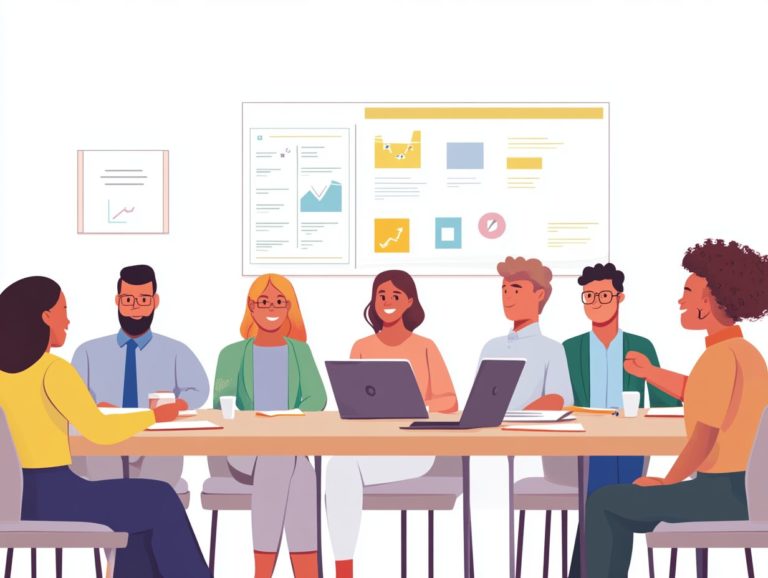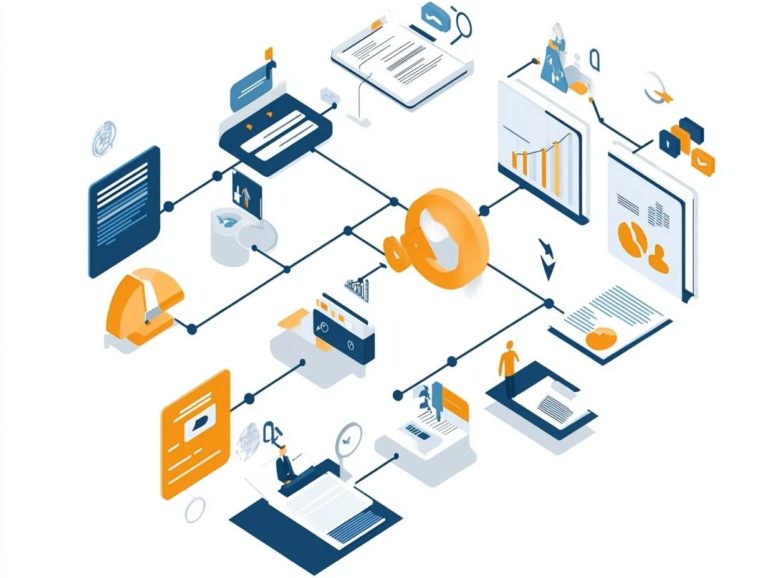How to Use Gamification in Corporate Training?
In today s fast-paced corporate landscape, engaging employees in training can feel like an uphill battle.
Enter gamification a dynamic tool that elevates traditional learning experiences into interactive, game-like environments that captivate and motivate.
This article delves into the essence of gamification. It highlights its benefits in enhancing engagement and retention while providing practical steps for successful implementation.
From pinpointing the right training topics to measuring success and adhering to best practices, this guide equips you to maximize the effectiveness of gamified corporate training.
Get ready to transform your approach to employee learning and watch the impact unfold!
Contents
- Key Takeaways:
- Understanding Gamification in Corporate Training
- The Benefits of Gamification in Corporate Training
- Implementing Gamification in Corporate Training
- Measuring the Success of Gamification in Corporate Training
- Best Practices for Using Gamification in Corporate Training
- Frequently Asked Questions
- What is gamification and how can it be used in corporate training?
- Why should I consider using gamification in corporate training?
- How can I incorporate gamification into my current training program?
- What are some best practices for using gamification in corporate training?
- Can gamification be used in all types of corporate training?
- Are there any potential drawbacks to using gamification in corporate training?
Key Takeaways:
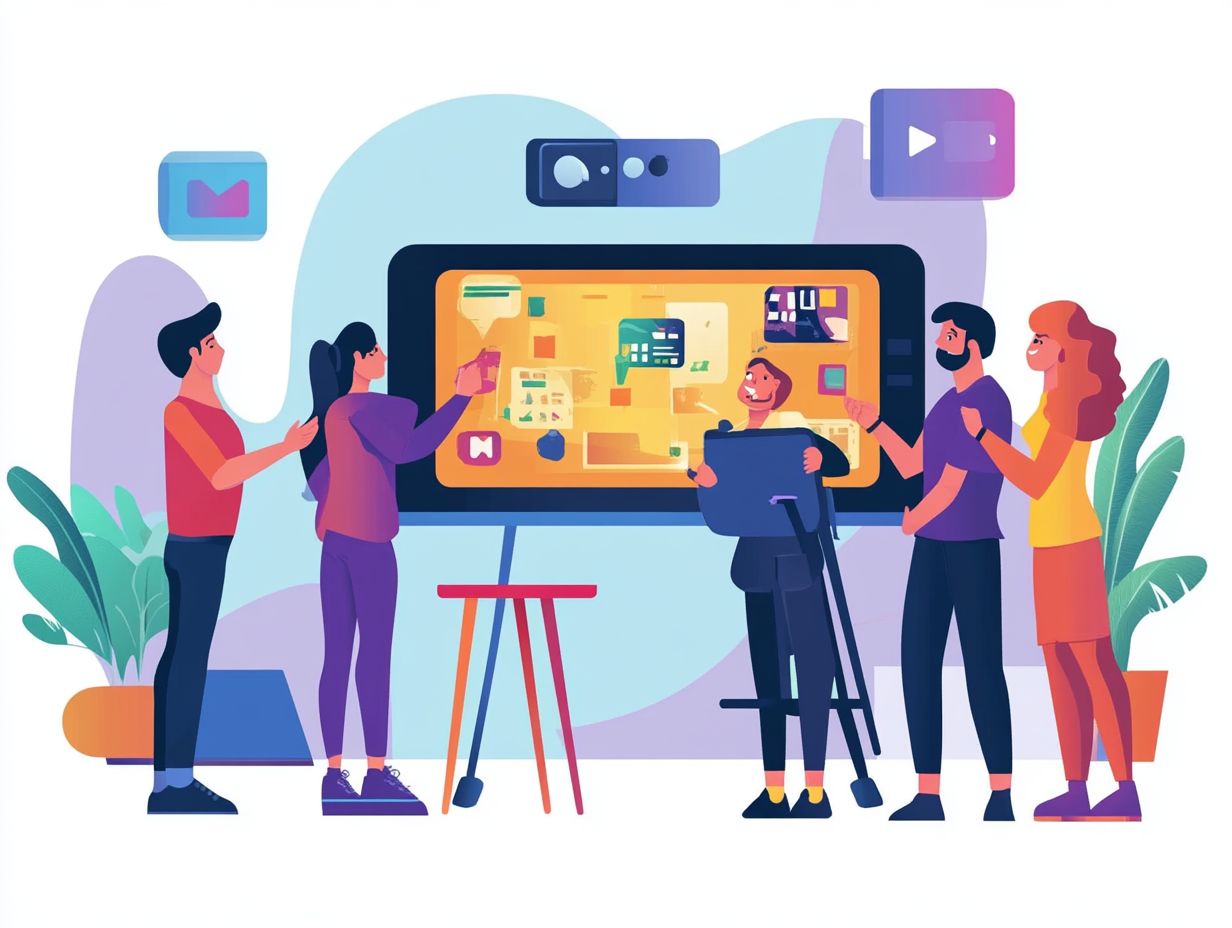
- Gamification enhances learning through game-like elements.
- It boosts motivation and retention of information.
- Identify training topics, measure success, and follow best practices for effective implementation.
Understanding Gamification in Corporate Training
Gamification in corporate training is a game-changing strategy that seamlessly weaves game mechanics into the learning environment. This approach enhances the effectiveness of employee training, particularly when considering how to use gamification in leadership training.
By incorporating elements like points, badges, and leaderboards, you can craft an engaging experience that ignites a competitive spirit among your team.
It enhances knowledge retention. It also creates a lively, enjoyable learning atmosphere that boosts engagement and training outcomes.
What is Gamification?
Gamification refers to the application of game-design elements in contexts beyond gaming, particularly within training programs that seek to enhance the interactive experience for employees.
By weaving in key principles such as competition, achievement, and collaboration, gamification motivates you and fosters a sense of community among learners. Core components include leaderboards, badges, and progress tracking, all of which can significantly boost your engagement and retention.
Consider how companies like Deloitte employ gamified simulations to create realistic scenarios where employees can hone their skills in a safe environment. Similarly, Microsoft has achieved remarkable success with its HoloLens training modules, which gamify technical education. These approaches not only make learning enjoyable but also inspire teams to collaborate, experiment, and ultimately reach their training goals.
The Benefits of Gamification in Corporate Training
The advantages of using gamification in employee onboarding are diverse and impactful. It greatly enhances employee engagement while fostering a culture of continuous learning.
By integrating game-like elements, you not only make training more enjoyable but also motivate your team to actively participate in their own development.
This approach cultivates an environment where learning becomes a dynamic and ongoing process.
Engagement and Motivation
One of the most significant advantages of gamification in corporate training is its remarkable ability to enhance your engagement and motivation through various gamification techniques.
By introducing elements like point systems, leaderboards, and challenging milestones, organizations can ignite a competitive spirit within you. This transforms monotonous tasks into exciting challenges. You can track your progress in real time, encouraging you to push your limits.
For instance, TalentLMS integrates game-based elements into their learning modules, making training enjoyable and productive. Similarly, Formlabs has adopted competitive elements in their onboarding process, leading to increased participation and enthusiasm as you and your colleagues strive to climb the ranks and earn rewards.
These real-world applications highlight the extraordinary potential of gamification to foster engagement and drive impressive performance outcomes.
Increased Learning and Retention

Gamification dramatically enhances knowledge retention in training. It creates a dynamic and engaging learning experience that resonates with employees.
Research shows that gamified learning can increase retention rates by up to 60% over traditional methods. For instance, Sally Beauty Supply introduced a gamified training platform. This captivated their employees and led to a 20% improvement in sales performance within just a few months.
MessageOps incorporated gamification into their employee onboarding processes. This resulted in a remarkable 30% reduction in training time and a significant boost in employee engagement. These case studies show how effectively gamification can transform training into something both memorable and effective.
Implementing Gamification in Corporate Training
Implementing gamification in corporate training demands careful planning and strategy. To enhance this process, consider exploring how to use technology in corporate training effectively. Identify the most relevant training topics and select techniques that align with your organization’s needs.
This thoughtful approach ensures that training is both engaging and effective, enhancing the learning experience for everyone involved.
Identifying Appropriate Training Topics
Choosing the right training topics is vital for successful gamification. Focus on key areas like onboarding and communication strategies.
When training topics align with your organization s strategic objectives, they enhance material relevance and instill a deeper sense of purpose among employees. For example, if your organization values customer service excellence, using role-playing scenarios that mirror real interactions can elevate engagement.
Offering modules that focus on teamwork and collaboration helps new hires integrate smoothly into their teams. This ultimately leads to better retention rates. By investing in meaningful training content, you cultivate an environment where employees feel valued and motivated.
Choosing the Right Gamification Techniques
Choosing the right gamification techniques is crucial for crafting an engaging training experience. Consider methods like points, badges, leaderboards, and team login functions.
These strategies spark healthy competition and nurture a sense of community and collaboration. In leadership academies, incorporating scenario-based simulations allows skills to be applied in realistic settings, enhancing both retention and application of knowledge.
When companies implement progress tracking through personalized dashboards, employees can visualize their development, boosting motivation. These dynamic approaches illustrate how blending game elements into corporate training revolutionizes the learning landscape, creating memorable experiences that drive performance and commitment.
Measuring the Success of Gamification in Corporate Training
Measuring the success of gamification in corporate training requires tracking key metrics that reflect both training engagement and enhancements in employee performance. This approach highlights the effectiveness of your strategies and provides valuable insights for continuous improvement.
Key Metrics to Track
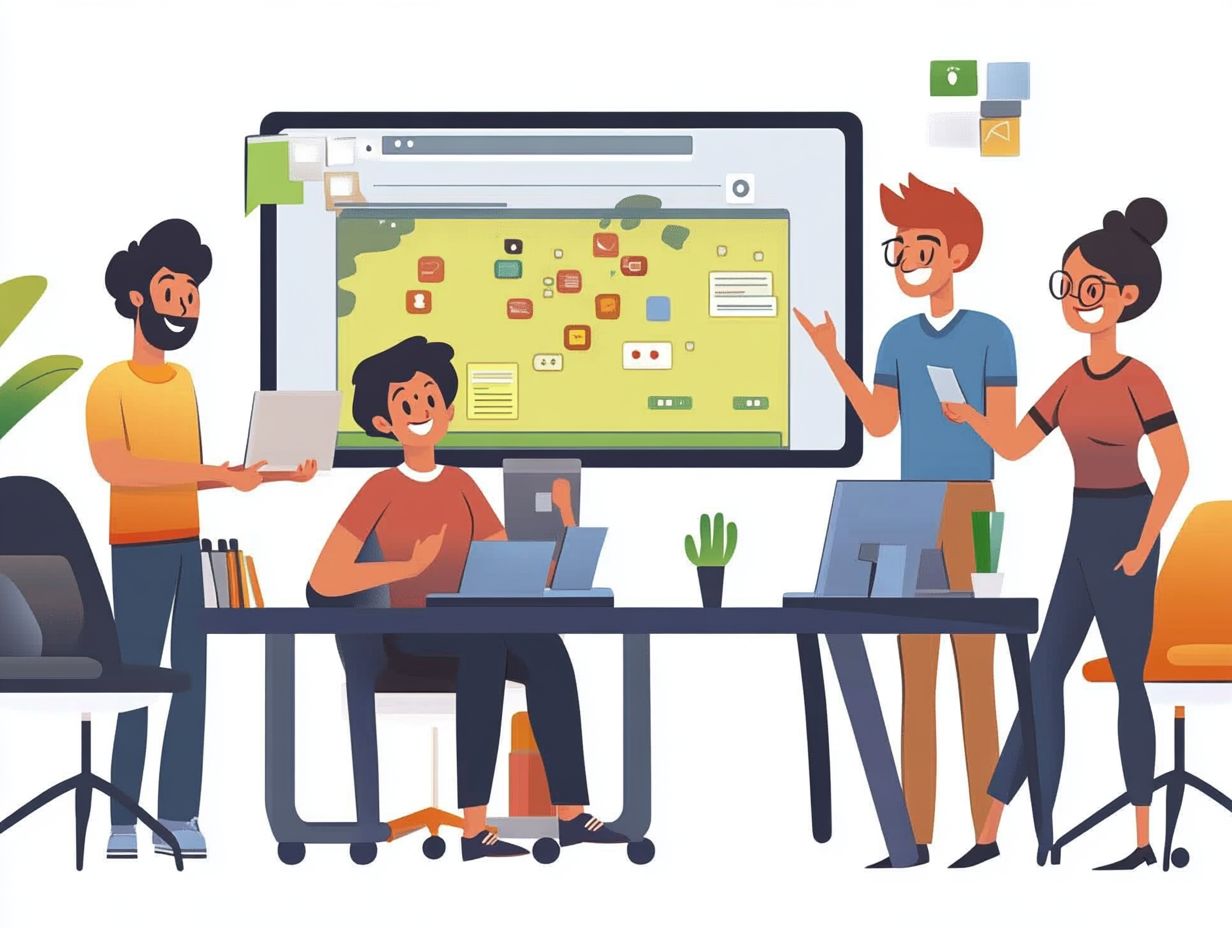
When evaluating the success of gamification, or using game-like elements in training, in your training programs, it’s essential to track key metrics such as training engagement levels, knowledge retention rates, and overall employee performance.
Prioritize completion rates to see how many participants finish training modules. Assessment scores offer valuable insights into content effectiveness and how well participants grasp the material. Gathering employee feedback after training is also crucial; it provides important perspectives on their experiences and highlights areas for improvement.
By analyzing these metrics together, you can make informed decisions. These decisions will guide adjustments in future training strategies, ultimately enhancing both engagement and effectiveness.
Best Practices for Using Gamification in Corporate Training
Successfully implementing gamification in corporate training demands a commitment to best practices that elevate its effectiveness and significantly enhance employee training outcomes. By focusing on strategic design and thoughtful engagement, you can ensure that the experience is not only enjoyable but also impactful, especially when considering techniques like role-playing in corporate training.
Tips for Maximizing Effectiveness
To truly harness the power of gamification techniques in corporate training, weave feedback into the fabric of your courses and craft an engaging, interactive experience that aligns with best practices for corporate training.
By cultivating an environment where employees feel at ease sharing their thoughts and suggestions, you can refine your training modules, making them more relevant and impactful. Encouraging peer-to-peer learning and collaboration not only strengthens the sense of community but also gives the power to employees to support one another on their learning journeys.
Consider the success stories of companies like Deloitte, who have implemented these strategies through their Leadership Academy and witnessed remarkable increases in engagement and knowledge retention. Tailoring content to reflect the unique needs and interests of individuals can further boost motivation and participation, ensuring each employee feels a genuine investment in their personal development.
Frequently Asked Questions
What is gamification and how can it be used in corporate training?
Gamification is the use of game elements and mechanics in non-game contexts to engage and motivate learners. It can be utilized in various forms, such as quizzes, challenges, and leaderboards, to enhance the learning experience and improve information retention.
Why should I consider using gamification in corporate training?
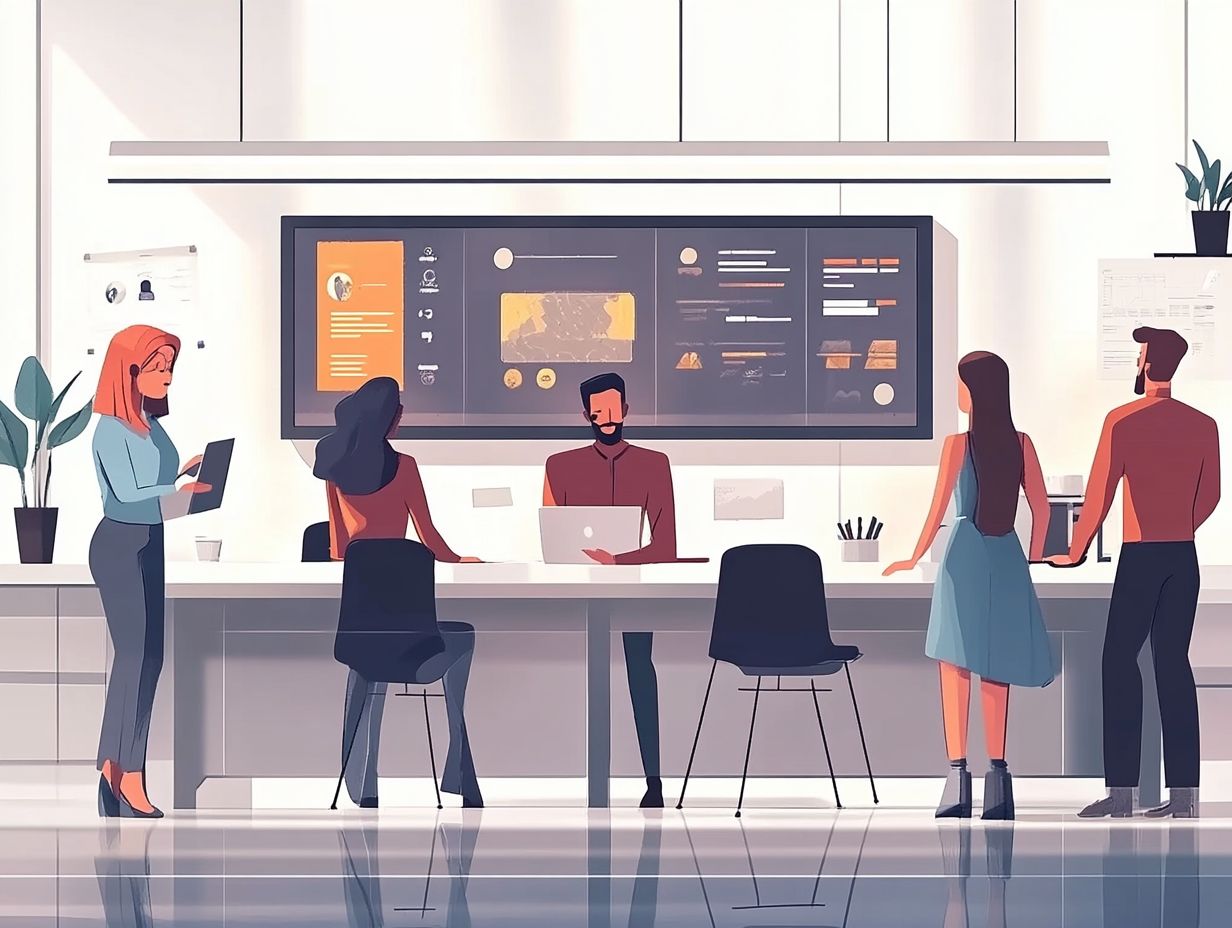
Gamification has been proven to increase learner engagement and motivation by tapping into their natural desire for competition, achievement, and rewards. It promotes a sense of fun and enjoyment in the learning process, making it more memorable and effective.
How can I incorporate gamification into my current training program?
Start today by adding fun game elements, such as points, levels, and badges, to your existing training materials. You can also use game-based simulations and scenarios to create an immersive learning experience. Alternatively, consider using a gamification platform or software to design and manage your gamified training program.
What are some best practices for using gamification in corporate training?
Set clear learning objectives to drive engagement! Align the game elements with these objectives. Ensure that the game elements are relevant and meaningful to the learners, and provide them with timely feedback and opportunities for reflection. Regularly analyze and evaluate the effectiveness of your gamified training program.
Can gamification be used in all types of corporate training?
While gamification can be applied in various types of corporate training, it’s most effective in areas requiring high engagement and motivation, such as compliance training, onboarding, and product knowledge training. It may not be suitable for training that is highly technical or requires a more serious tone.
Are there any potential drawbacks to using gamification in corporate training?
Gamification refers to applying game-like elements in non-game settings to motivate and engage users. Gamification offers many benefits for corporate training. However, careful planning and implementation are crucial to avoid potential drawbacks.
Poorly designed gamification can distract learners from the main objectives. This could hinder their overall learning experience.
Ensure that game elements are inclusive. They should not discriminate against any learners.
Get started with gamification today and transform your corporate training experience!

